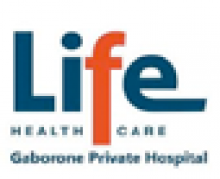Burns are commonly caused by the sun, hot liquids, fire, electricity or chemicals.
Summary
Burns are commonly caused by the sun, hot liquids, fire, electricity or chemicals. Burns are classified according to depth and size as superficial, intermediate or deep. Superficial and intermediate burns are treated primarily by cooling the area. Deep burns must also be cooled, but require emergency hospital care. Prevent burns in children by never leaving them unsupervised around dangers like fires and stioves.
What causes burns?
Burns are the greatest cause of unnatural death among South African children under age five. Burns commonly result from the sun, scalding by hot liquids, fire, electricity or chemicals. Very young children have especially sensitive skin and even a burn from a cup of coffee can prove fatal.
What are the symptoms and signs of burns?
Pain is not an indicator of the severity of a burn. Burns are classified into superficial, intermediate and deep - according to the depth and size of the burn. Superficial burns involve only the outer skin layer. Sunburn is an example of a superficial burn. There is mild swelling, redness and pain, but no blisters. The pain improves in 48 to 72 hours and there is usually no scarring.
Intermediate burns involve injury to both skin layers: the epidermis and dermis. These burns are often caused by hot liquids. They are very painful because they affect a large number of nerve endings. The burnt area is tender, blotchy and swollen. Blisters generally form which may weep fluid. If superficial burns do not become infected, they heal in seven to 21 days, with some scarring.
Deep burns (full-thickness burns) involve destruction of all skin layers and may damage muscle, fat and bone. These burns appear white or charred black, and are bloodless. They are not painful because the nerves have been destroyed. The area of the burn also feels dry, leathery and hard. There may also be painful second-degree burns on the edges of the burn. Deep burns can only heal with skin grafting to cover the damaged area. They leave deep scars. The size of the burnt area is also important in assessing how serious the burn is. As a rule of thumb: the open hand of the burnt person represents 1% of the body surface area.
First aid for burns
Superficial and intermediate burns
- Submerge the burnt area in cool running water for 10-30 minutes, until the pain subsides. Cool water reduces the heat and prevents further tissue damage. Alternatively, cover the burn with a wet, clean cloth or a burnshield, particularly if the burn is on the face. Don't use ice: it can cause frostbite.
- Never use butter, grease or oil on a burn.
- If the burn rubs against clothing, cover it with antiseptic cream and a dry gauze bandage changed twice a day.
- Don't burst blisters; they help skin to heal. If blisters break, clean them with water, apply antiseptic ointment and cover with a gauze bandage. Change the bandage twice daily.
- Remove clothing and jewellery from the burnt area as swelling could make it difficult to remove later. Don't try to remove clothing that sticks to the skin.
- If a secondary burn is on an arm or leg, keep the limb elevated above the heart.
- Take paracetamol for pain.
- Deep burns
Get to hospital immediately while waiting for transport or ambulance:
- If the person is not breathing, perform rescue breathing.
- Treat for shock if necessary.
- Don't remove any clothing at or near the burn site.
- If the burn is on a limb, keep it elevated above the heart.
- Run cool water over burnt areas for 10 to 30 minutes.
- Place clean, dry, non-fluffy cloths over the damaged area to help reduce loss of body heat.
Get help immediately if:
- A child or elderly person is burnt, even if you think the burn is minor.
- It is a deep, chemical or electrical burn.
- An intermediate burn covers an area greater than your palm.
- The face, hands, feet, genitals or creases of the joints are burnt, or the burn encircles a limb or body.
- You are uncertain of the severity of the burn.
- The person is in shock.
Call your doctor if:
- Any burn becomes infected. Signs of infection include increased pain, redness, swelling, oozing or fever of 37.8 ° C or higher.
- Any burn shows no improvement after two days.
- Pain lasts longer than 48 hours.
- The burn is intermediate and the person has not had a tetanus injection in the past five years.
Prevention
- Never leave a child alone in the kitchen with pots on the stove. Keep kettles and similar appliances out of reach of children. Turn pot handles towards the wall.
- Supervise children in any room with a fireplace or paraffin stove.
- Electrical appliances should be safely earthed and wall plugs secured with child-proof covers.
- Store erosive chemicals out of children's reach.
- Use flame-proof materials for bedding and clothing.
- Set your geyser at 50° C or lower.









